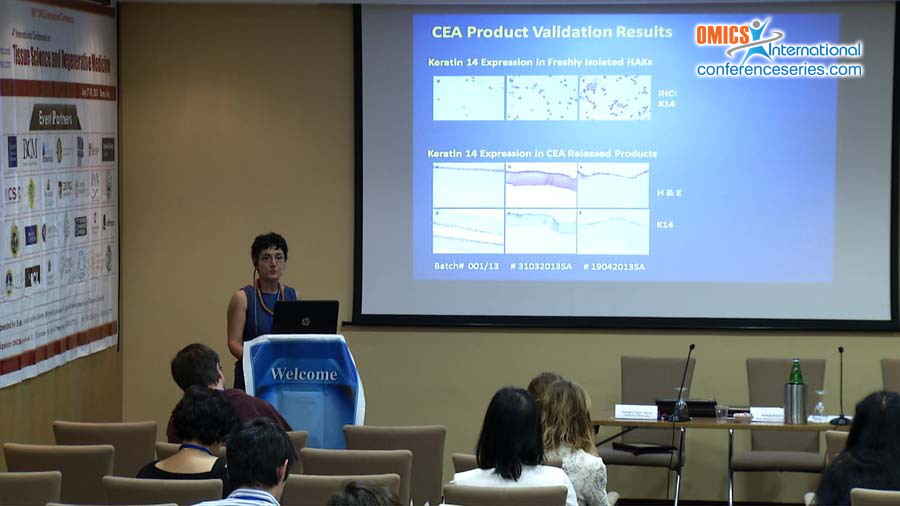
Shiva Akbarzadeh
Monash University
Australia
Title: Use of clotted human plasma and aprotinin in skin tissue engineering - A novel approach to engineering composite skin on a porous scaffold
Biography
Biography: Shiva Akbarzadeh
Abstract
Tissue-engineered composite skin is a promising therapy for treatment of chronic and acute wounds, including burns. Providing the wound bed with a dermal scaffold populated by autologous dermal and epidermal cellular components can further entice host cell infiltration and vascularisation to achieve permanent wound closure in a single-stage. However, the high porosity and the lack of a supportive basement membrane in most commercially available dermal scaffolds hinders organized keratinocyte proliferation and stratification in vitro and may delay re-epithelization in vivo. The objective of this study was to develop a method to enable the in vitro production of a human skin equivalent (HSE) that included a porous scaffold and dermal and epidermal cells expanded ex vivo, with the potential to be used for definitive treatment of skin defects in a single procedure. A collagen- glycosaminoglycan dermal scaffold (Integra®) was populated with adult fibroblasts. A near normal skin architecture was achieved by addition of coagulated human plasma to the fibroblast-populated scaffold prior to seeding cultured keratinocytes. This resulted in reducing scaffold pore size and improving contact surfaces. Skin architecture and basement membrane formation was further improved by the addition of aprotinin (a serine protease inhibitor) to the culture media to inhibit premature clot digestion. Histological assessment of the novel HSE revealed expression of keratin 14 and keratin 10 similar to native skin, with a multi-layered neo-epidermis morphologically comparable to human skin. Furthermore, deposition of collagen IV and laminin-511 were detected by immunofluorescence, indicating the formation of a continuous basement membrane at the dermal-epidermal junction. The proposed method was efficient in producing an in vitro near native HSE using the chosen “off the shelf” porous scaffold (Integra®). The same principles and promising outcomes should be applicable to other biodegradable porous scaffolds, combined with autologous cells, for use in wound treatment.

